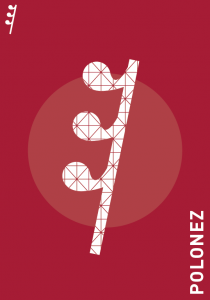POLONEZ 1 Project


Exploring Nuclear Structure of nuclei in the vicinity of Z = 50 closed shell using Coulomb Excitation technique.
Mansi Saxena, PhD
The nucleus is extremely small, namely about 10 -14 to 10-15 m in diameter, and can contain up to a couple of hundred individual protons and neutrons that orbit relative to one another and interact primarily via the nuclear and Coulomb forces.The nuclear force is at first glance a mysterious one since it has few if any recognizable consequences in macroscopic matter (i.e., everyday phenomena). And, in fact, the exact nature of this force is still largely unknown. Moreover, nuclear deformation is a fascinating phenomenon in atomic nuclei. Understanding how deformation is emerged can be a gateway to the better understanding of nuclear forces.
The interaction between two protons or two neutrons or proton and neutron leads to weakly bound and strong bound systems named as magic nucleons. Nucleons are filled in shells and the magic nucleons are closing of the shells. Since the proton proton, neutron – neutron and proton neutron interaction is only modelled by different theories, experimental data are needed. One of these experimental methods is electromagnetic interaction between the charge of the projectile and the charge distribution of the target nucleus. For these measurements, an accelerator is needed which uses projectile to excite the nucleus of interest. This excited nucleus will emit high energetic light (gamma rays); which will be detected. From the spectral distribution, one gets to see inside the nucleus.
Our proposal deals with stable isotopes of Sn and Te for studying the interaction of individual nucleons and also their collective motion. This study is a small step in understanding the nuclear structure of nuclei around the closed shell region and it will also be of great relevance as to how deformation is created as we move away from closed shell nuclei. Such studies can shed more light on comprehending the nature of nuclear forces. This study is complementary to the research performed with Radioactive Ion Beam facilties which provide exotic beams for studying the nuclear shell structure of unstable nuclei near the proton and neutron drip lines, away from closed shell.
This project has received funding from the European Union’s Horizon 2020 research and innovation programme under the Marie Skłodowska-Curie grant agreement No 665778 via the Polish National Science Centre.
![]()

